Owning a spa pool provides relaxation, hydrotherapy benefits, and a perfect place to unwind after a long day. However, to keep your spa in pristine condition and ensure a safe, enjoyable experience, proper water chemistry is essential. This comprehensive guide will walk you through everything you need to know about spa pool chemicals—from understanding what each one does to how often you should be using them. Whether you’re a new spa owner or looking to improve your maintenance routine, this guide will help you maintain crystal clear, comfortable water year-round.
Why Spa Pool Chemicals Are Important
Maintaining clean, balanced spa water is the number one factor for both ensuring a great user experience and protecting the components within your spa. Proper chemical maintenance prevents common issues like cloudy water, unpleasant odours, skin and eye irritation, and the growth of bacteria or algae. We understand that learning about various chemicals can feel overwhelming at first, so let’s go through what each chemical does and how to use it properly.

Essential Spa Pool Chemicals & Their Functions
Sanitisers (Kill Bacteria & Keep Water Safe)
1. Chlorine
The most widely used sanitiser for spa water is chlorine. It’s affordable and effective, killing harmful bacteria and viruses while improving water clarity and colour. Be sure to use spa-specific chlorine, as swimming pool varieties can be too strong for your spa. Spa chlorine typically comes in powder form, making it easy to measure and add to the water.
When adding chlorine, run your jets and leave the cover off for at least 15 minutes to prevent damage to headrests and covers. A good rule of thumb is one teaspoon per person per use. Regular testing with spa test strips helps maintain optimal free chlorine levels of 1-3 ppm. If your spa has an ozone or UV system, you can reduce the amount and frequency of chlorine dosing.
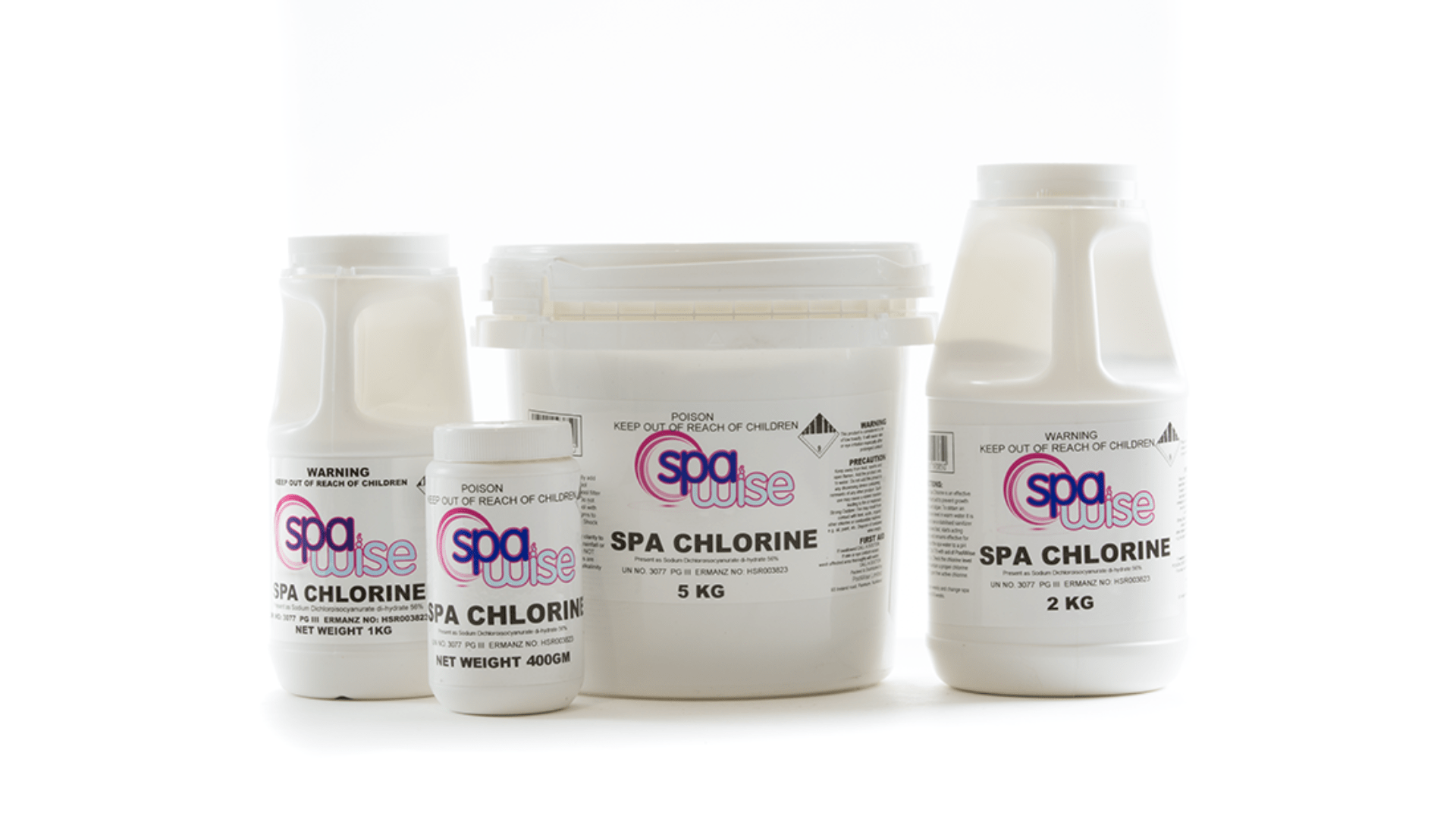
2. Ozone/UV
Many newer spas come equipped with ozone or UV systems to complement water treatment. These built-in devices operate during filtration cycles and reduce how often you need to add chlorine, as they handle some of the sanitising work. Keep in mind that ozone systems may affect the accuracy of chlorine tests on your test strips.
3. Bromine
Bromine offers an alternative to chlorine and is generally gentler on eyes, skin, and nose, with better sanitising performance in warmer water. However, it typically costs more than chlorine. Bromine usually comes in slow-release tablets placed in floating dispensers, which means less frequent dosing but less control over the amount added. This can potentially lead to overdosing if too many tablets are used, which may damage components over time.
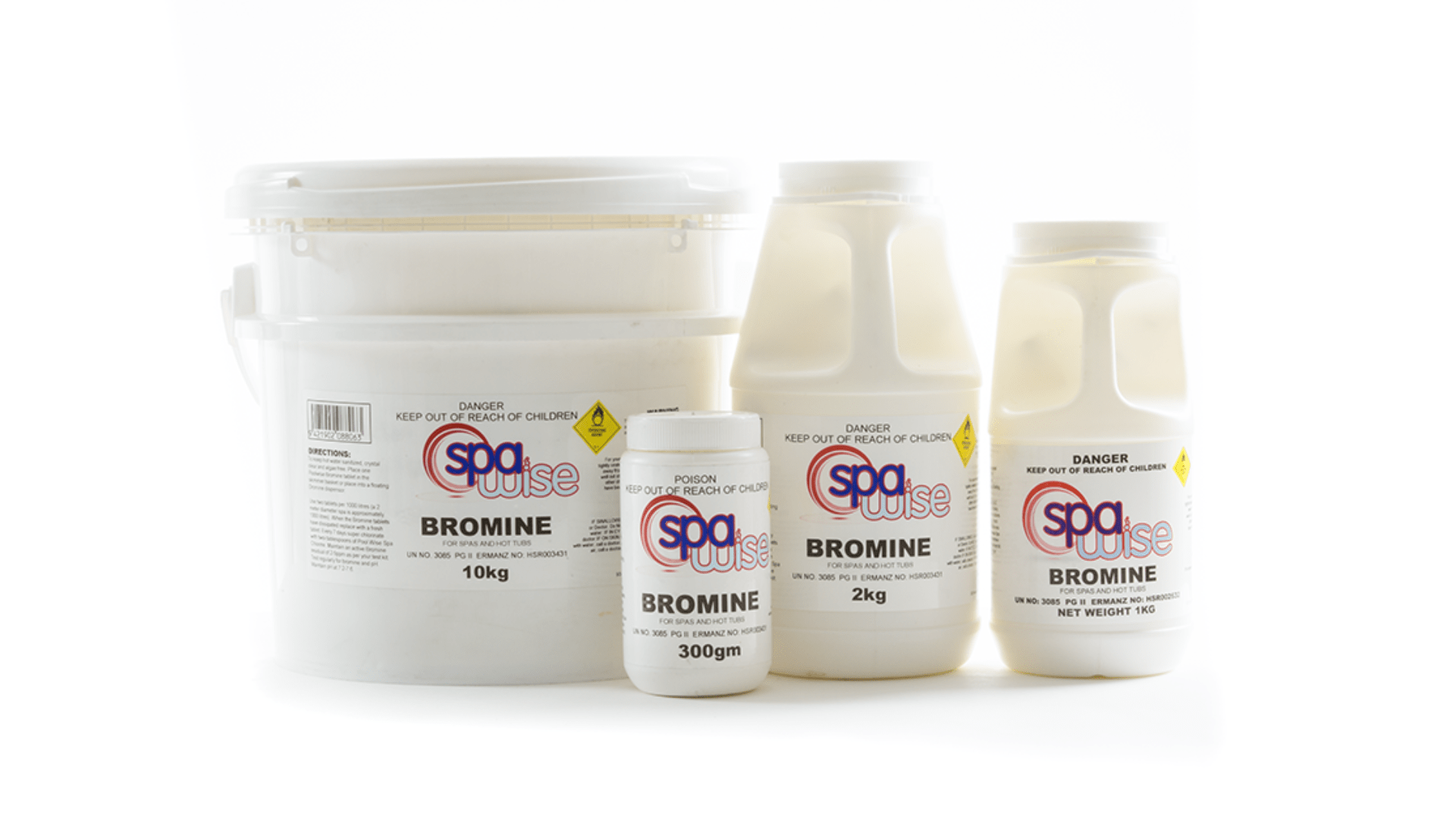
Shock Treatments (Deep Clean & Refresh Water)
Shock treatments help eliminate sanitiser byproducts and excess organic matter that build up over time. Shocking the water can rejuvenate the sanitiser in the byproduct, making it effective again.
Test strips often measure both total chlorine and free chlorine. Free chlorine actively sanitises the water, while total chlorine includes both free chlorine and combined chlorine (byproducts). A shock dose oxidises contaminants in the combined chlorine, converting it back into free chlorine.
You can use chlorine itself for shock dosing, or non-chlorine alternatives like Oxygen Shock. The advantage of Oxygen Shock is that it reactivates existing chlorine without adding more to your spa.
pH Balancers (Maintain Water Acidity/Alkalinity)
pH measures how acidic or basic your spa water is, on a scale from 0 (very acidic) to 14 (very basic), with 7 being neutral. Spa water should be kept between 7.2 and 7.8 to prevent eye and skin irritation, or corrosion to the spa itself.
To properly balance pH, use spa test strips to measure both total alkalinity and pH level.
Total alkalinity measures alkali material in the water. Adding an alkali like Alkalinity Up, serves two purposes: it raises pH to the desired level and prevents large pH fluctuations over time. Keep total alkalinity between 80-120 ppm.
If you find your pH level climbing too high over time, add pH decreaser like pH Down, to bring it back within the ideal range.
Test your spa water weekly for best results.
Calcium Hardness (Prevent Scale & Corrosion)
Water or calcium hardness measures calcium content in your water. Low calcium (soft water) can cause corrosion by drawing minerals out of spa equipment, damaging pump seals and heater elements. Excessively hard water causes calcium to come out of solution, creating scale buildup inside your spa. Water hardness can be tested with test strips, with the ideal range being 150-250 ppm.
If your test strips don’t measure water hardness, take a water sample to a local spa/pool shop for testing, or check your local council’s water testing results.
Some optional extras to enhance your spa maintenance routine:
- Clarifiers – Help eliminate water contaminants by making them easier for your filters to capture. They accelerate filtration by binding smaller particles into larger ones that filters can trap more effectively.
- Foam Removers (or defoamers) – Help prevent excessive foaming caused by skin oils, detergents, or other products in the water. They penetrate bubble film, breaking them down and stopping new bubbles from forming.
- Pipe Cleaner – Use before regular spa draining to help clear out body fats and oils that can accumulate in your spa pipes and hoses
Filter Cleaner
Filter or cartridge cleaner is essential for maintaining your filters. Depending on usage, clean filters every 1-2 weeks, alternating between hosing them off and soaking in filter cleaner solution before rinsing. Since filters collect contaminants from your spa water, regular cleaning is crucial for maintaining clean and clear water.
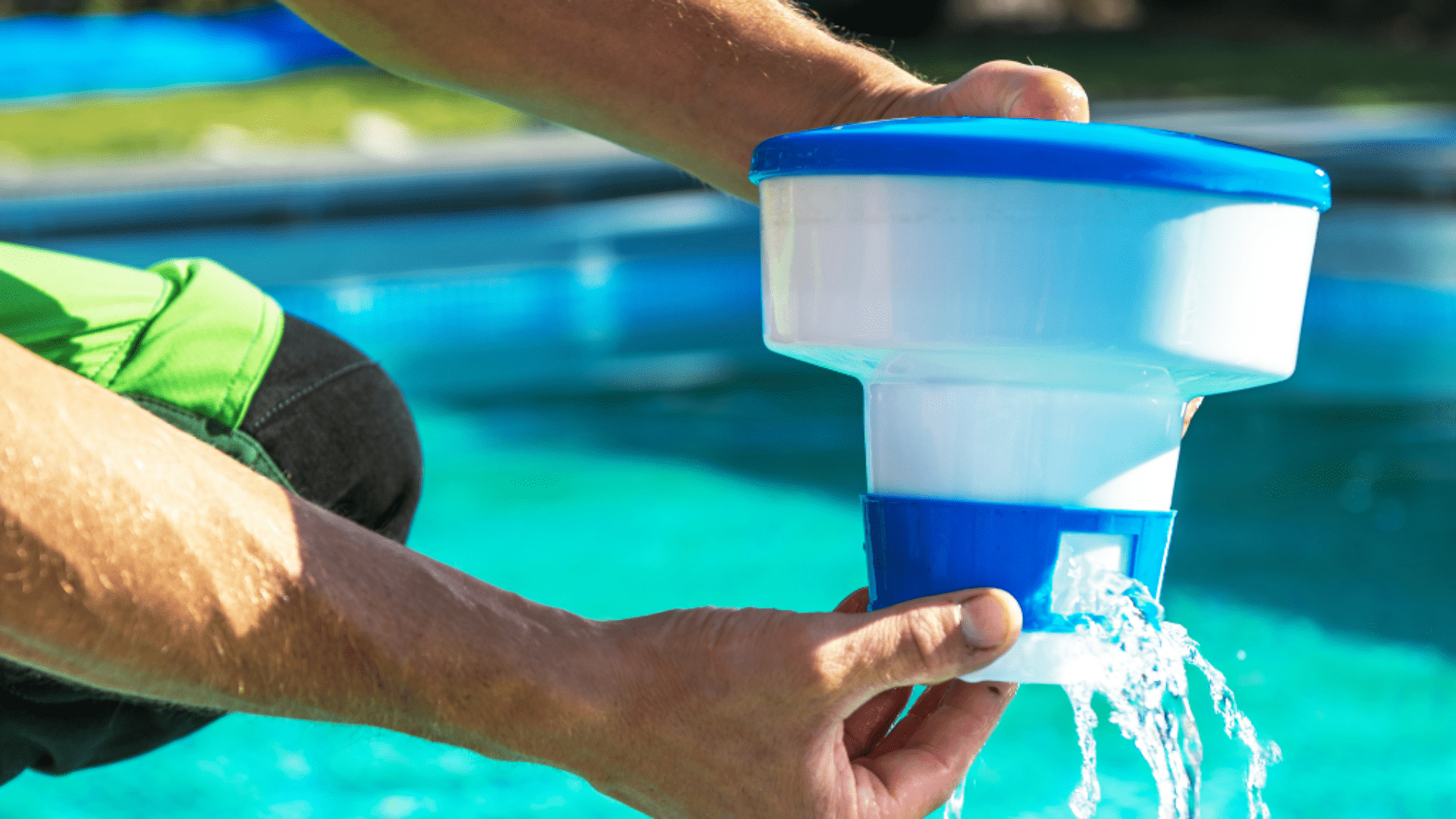
How to Use Spa Chemicals Correctly
For best results, add chemicals to your spa when it’s at the proper temperature with jets running. Warm/hot water dissolves chemicals more effectively, while jets help distribute them throughout your spa. Always leave the cover off when adding sanitisers, particularly chlorine.
Never mix chemicals together directly—this can cause dangerous reactions.
Follow the proper sequence: balance pH/alkalinity first, then address calcium hardness and sanitiser levels.
Step-by-Step Guide to Testing & Adjusting Spa Water
- Test your water – Use quality test strips to check pH, alkalinity, sanitiser levels, and ideally, calcium hardness.
- Balance alkalinity first – Add alkalinity increaser if levels are below 80 ppm, or pH decreaser if above 120 ppm. Run jets for 15-30 minutes, then retest.
- Adjust pH – Once alkalinity is balanced, address pH levels. Add pH increaser if below 7.2, or pH decreaser if above 7.8. Run jets for 15-30 minutes, then retest.
- Check calcium hardness – Add calcium hardness increaser if below 150 ppm. If above 250 ppm, partial water replacement may be necessary. It is best to mix the calcium hardener in a bucket of the spa water to dissolve the chemical, before adding it to the spa. This will prevent excess calcium adhering to the spa surface.
- Add sanitiser – Add appropriate amount of chlorine or bromine. With chlorine, use approximately one teaspoon per person who used the spa, or follow test strip results to maintain 1-3 ppm. Always add the chlorine after bathers exit the spa and run the jets with cover off for 10-15 minutes.
- Shock treatment – Apply as needed, or after heavy spa usage. Run jets with cover off for at least 30 minutes afterwards.

Common Spa Pool Chemical Mistakes to Avoid
- Adding chemicals in the wrong order – Always balance alkalinity first then pH before adding sanitisers for maximum effectiveness.
- Overdosing – More isn’t always better. Follow dosage instructions carefully and test water before adding more.
- Mixing chemicals directly – Always add chemicals to water, never water to chemicals or chemicals to each other.
- Closing the cover immediately – Allow sanitisers and shock treatments time to dissipate by leaving the cover off for 15-30 minutes.
- Inconsistent maintenance – Regular testing and chemical adjustment prevents problems before they start.
How Often to Check and Maintain Chemical Levels
- Test pH, alkalinity, and sanitiser levels – Weekly, or more frequently with heavy use.
- Shock treatment – Fortnightly, or after parties or heavy usage.
- Clean filters – Every 1-2 weeks, depending on usage.
- Test calcium hardness – Monthly.
Change water completely – Every 3-4 months, depending on usage and water quality. Note: The TDS test (total dissolved solids) will determine when to empty and your spa or pool shop will be able to test for TDS. As the solids level in the water increases, managing the water balance becomes more difficult, indicating it’s time to change it over.
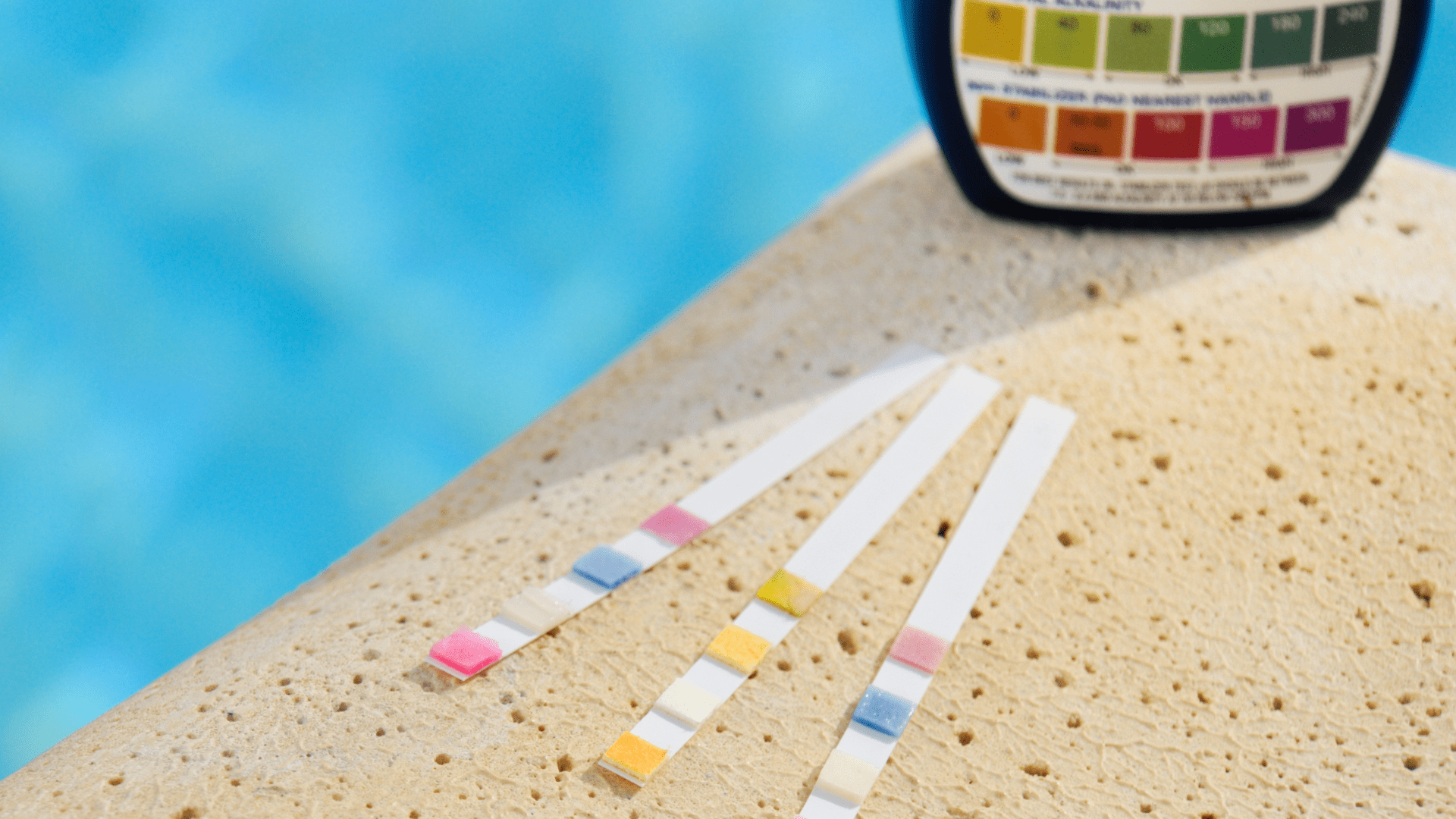
Choosing the Right Chemicals for Your Spa
Selecting the appropriate chemicals depends on various factors:
Factors to Consider
- Spa size – Larger spas require proportionally more chemicals.
- Usage frequency – More frequent use means more regular chemical maintenance.
- Personal preferences – Some prefer chlorine’s effectiveness, while others prefer bromine’s gentler nature. There are also other alternative sanitisers available, apart from just chlorine and bromine, such as Peroxil, lithium, salt and Simple Silver. They are all effective if applied correctly and our team can assist with the correct choice for your situation.
- Skin sensitivity – If you have sensitive skin, bromine or alternative sanitising systems might be preferable.
- Local water quality – Your source water affects which chemicals you’ll need most.
For first-time spa owners, we recommend our Spa Start-Up Kit, which includes all the essentials to get you started with proper chemical maintenance.
SPA Depot’s Spa Valet Service
While understanding spa chemicals is important, we understand that regular maintenance can be time-consuming. That’s why at SPA Depot NZ, we offer a professional spa and pool valet service. Our experienced spa technicians can handle all aspects of your spa maintenance on a fortnightly basis, ensuring your pool remains in perfect condition without you having to worry about chemical balancing, cleaning, or troubleshooting.
Our valet service starts at just $45 per fortnight and includes:
- Water testing and chemical balancing
- Filter cleaning and inspection
- Surface cleaning and sanitising
- Equipment checks
- Personalised advice for optimal spa care
Learn more about our Auckland spa pool cleaning service and reclaim your time while enjoying a perfectly maintained spa.
FAQs About Spa Pool Chemicals
Can I use my spa without chemicals?
No, using a spa without any chemicals is not recommended. Without proper sanitisation, bacteria and other pathogens will quickly multiply in the warm water, creating potential health hazards. Additionally, untreated water can damage spa components and lead to costly repairs.
How often should I change the water?
For residential spas, completely change the water every 3-4 months under normal use conditions. If your spa sees heavy use, you might need to drain and refill it more frequently. Always clean the spa shell thoroughly when changing water.
What should I do if I add too much of a chemical?
If you’ve added too much sanitiser, leave the cover off and run the jets to allow the excess to dissipate. For severe overdosing, partial water replacement might be necessary. For pH or alkalinity imbalances, we suggest adding the appropriate counterbalancing chemical gradually until levels return to normal.
How long should you wait to get in after putting chemicals in the spa?
After adding sanitisers or shock treatments, wait at least an hour or two before getting in to prevent eye, nose or skin irritation. For pH or alkalinity adjusters, wait about 15-20 minutes. Test water regularly to ensure it’s balanced and safe to enter. For major chemical adjustments, it’s best to wait several hours or overnight.
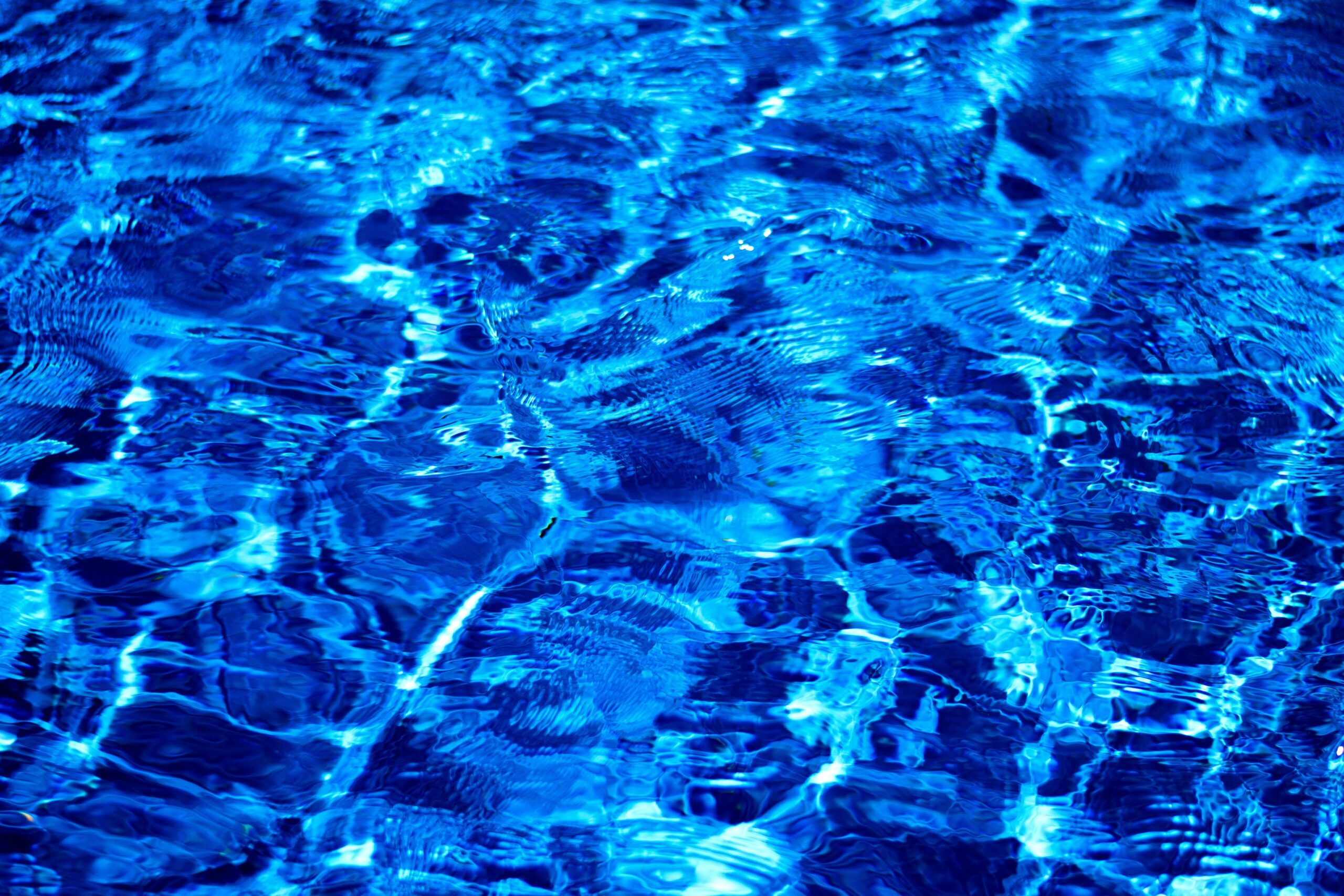
Conclusion
Maintaining proper chemical balance in your spa pool doesn’t have to be complicated. With regular testing, appropriate chemical treatments, and consistent maintenance, you’ll enjoy crystal clear, comfortable water that’s safe for everyone who uses your spa.
Remember these key points:
- Test weekly and adjust chemicals in the proper order
- Clean filters regularly
- Shock treat fortnightly
- Change water every 3-4 months
- Consider our Auckland spa pool maintenance service if you’d prefer to leave your pool care to experts.
By following this guide, you’ll extend the life of your spa, protect its components, and ensure the most enjoyable experience possible. Your skin, eyes, and spa equipment will thank you!
Ready to stock up on quality spa chemicals for your maintenance routine?
Browse our selection of spa pool chemicals and ensure your spa stays in perfect condition year-round.

